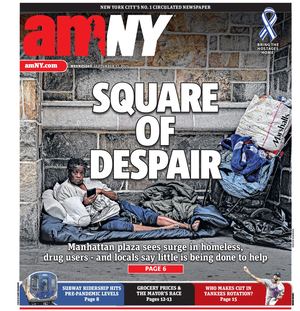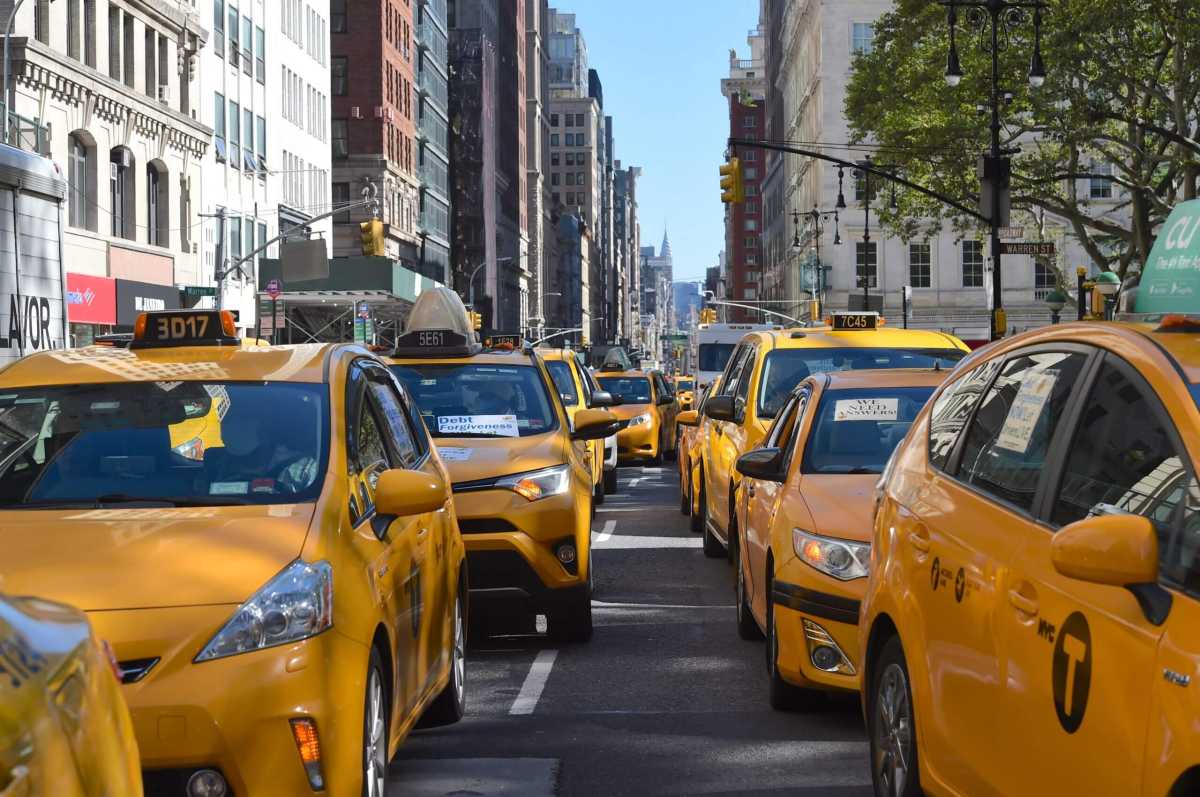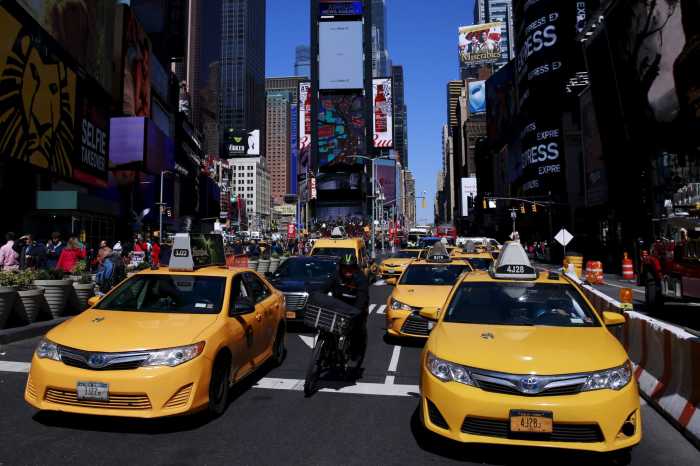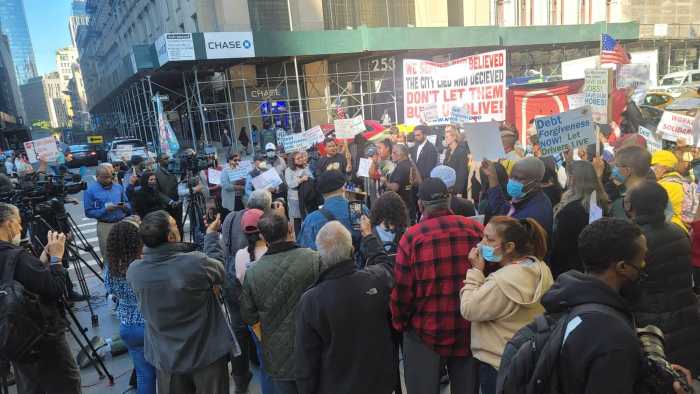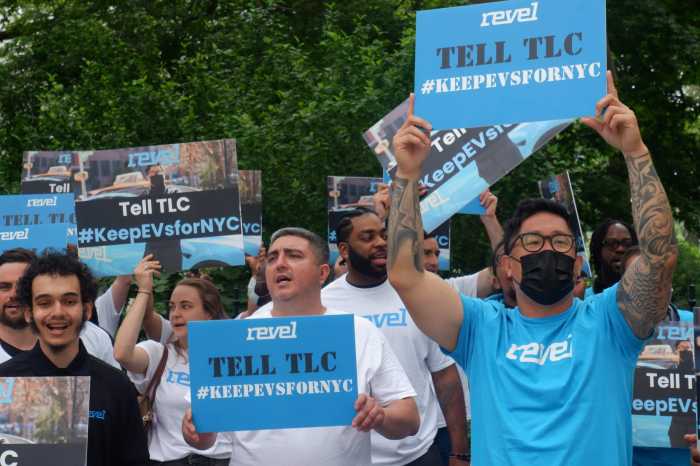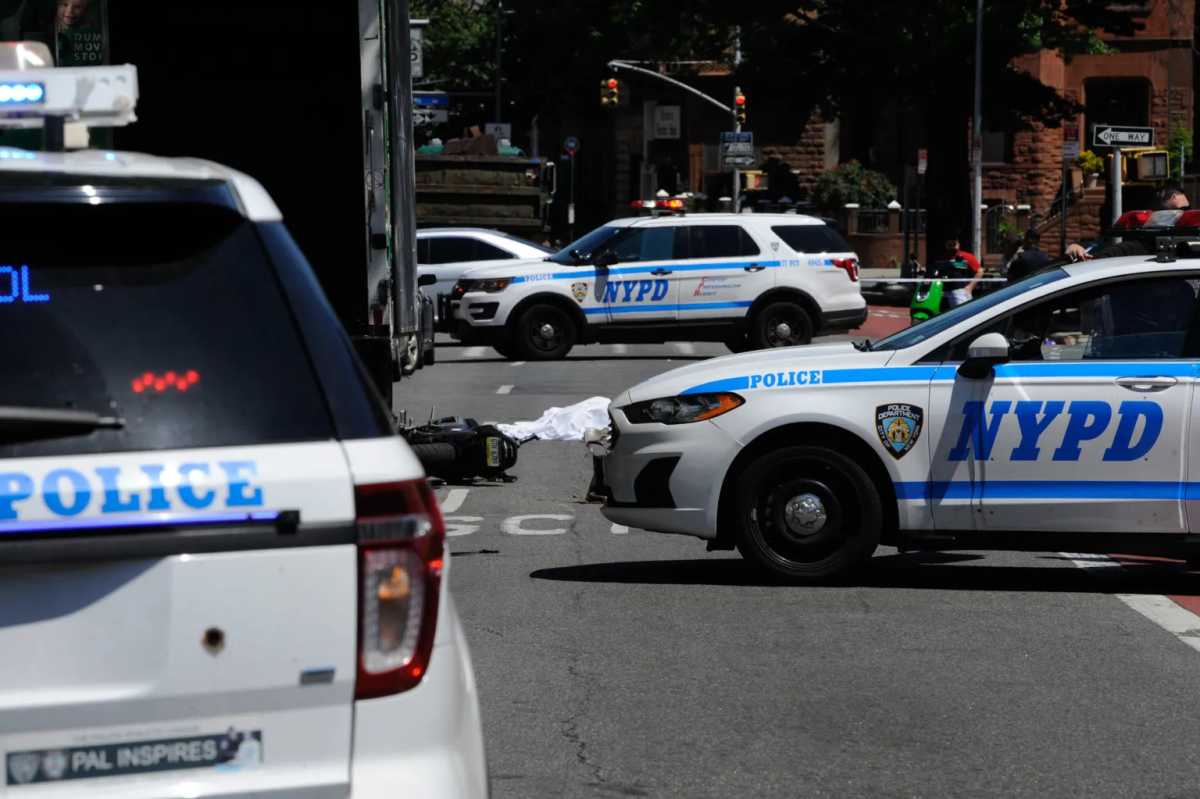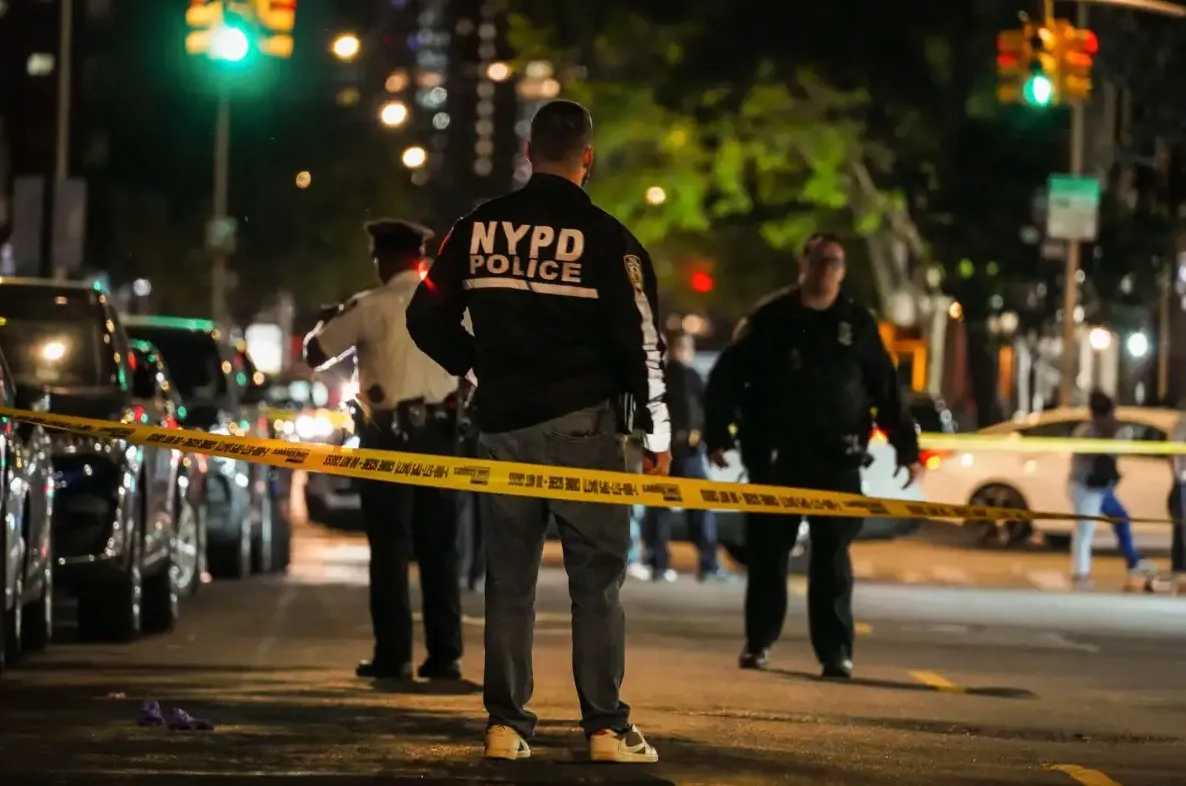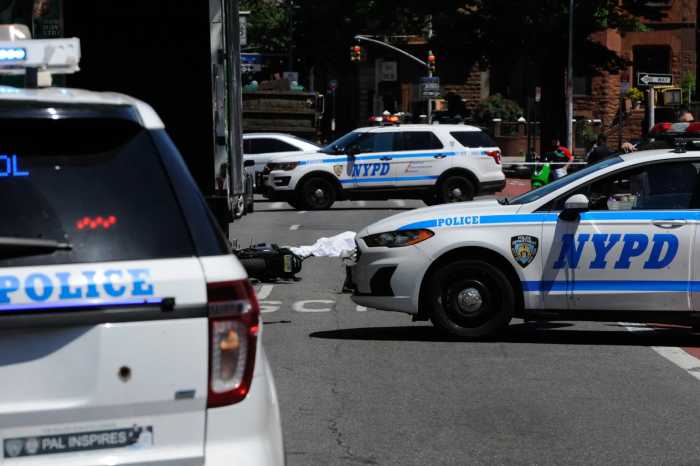Mayor Eric Adams plans to start the long-awaited taxi medallion debt relief program with a city-backed guarantee next month, after finalizing a deal with the cabbie union and lenders Tuesday.
The new proposal allows debt-ridden owners of the permit to operate cabs in the city to start restructuring their loans on Sept. 19 under an amended version of the city’s Medallion Relief Program, which still needs a final sign-off from the Taxi and Limousine Commission at the end of next month.
The city has agreed with Connecticut-based investment firm Marblegate Asset Management, the largest taxi medallion lender in the city, and the 25,000-member strong New York Taxi Workers Alliance to a new framework for the scheme — renamed Medallion Relief Program+.
The agreement hikes interest rates and monthly payments compared to an earlier framework by former Mayor Bill de Blasio, but advocates and Mayor Adams celebrated the progress toward getting the program operational nearly a year after officials first announced it.
“The enhanced version of the Medallion Relief Program we are announcing today will deliver life-changing debt forgiveness to more than 3,000 drivers who deserve economic justice,” Adams said in a statement on Aug. 30. “Our taxicab medallion owners and drivers have always kept New York City moving, and it is finally time we pay it forward with real debt relief for owners in need.”
Former Mayor Bill de Blasio last November announced an agreement with Marblegate and NYTWA that would allow medallion owners to restructure outstanding debts to a principal of $200,000, with a $30,000 grant as a down payment for eligible applicants that own no more than five medallions. Crucially, de Blasio also committed the city to acting as a guarantor if a borrower defaulted, a provision cabbies had been fighting for months.
The TLC, which regulates the city’s taxi and for-hire vehicle industry, adopted that framework in March, but without a start date.
Five months later, a new set of rules includes the same maximum balance and grant, but increases the interest rates from 5% to 7.3% and monthly payments from $1,122 to $1,234.
City Hall chalked up the raises to a changed economic climate.
“Rapidly changing economic conditions — including inflation and rising interest rates — required adjustments to the original proposed agreement,” reads the mayor’s press release.
In order to keep the monthly payments from growing even higher, the agreement stretches the loan schedule out from 20 to 25 years.
The revised rules also include a ban on buying a new medallion for five years if a borrower defaults, in order to stop them defaulting and turning around to buy the permit at a cheaper price.
The Taxi Workers Alliance’s executive director said the deal was still a major win for members, despite the amendments, since average medallion debts are currently $550,000 with monthly payments of about $3,000, and because drivers will finally have a setup where the city will act as a guarantor.
“Going from an average $550,000 to $170,000, and to go from personal guarantees where people’s houses and savings were on the line to a city-backed guarantee is just life-changing,” Bhairavi Desai told amNewYork Metro.
Desai estimated that Marblegate has more than 60% of the medallion loans that are underwater, and she expected other lenders to hop on board once the program kicks into gear.
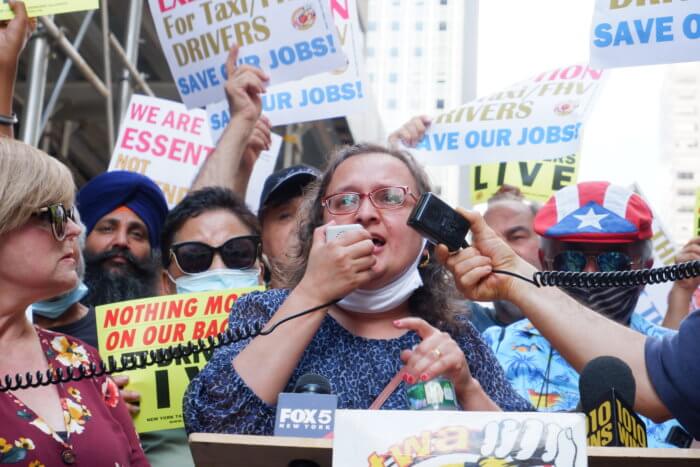
The TLC will hold a public hearing on the changes on the morning of Sept. 28, and the panel plans to hold a vote it on the same day, enabling the relief program to go into effect.
De Blasio committed to the municipal backstop after a hard battle by cab drivers, who camped outside City Hall in protest for more than a month last fall and spent two weeks on hunger strike.
The former mayor previously launched a $65 million grant program for drivers, but advocates like the NYTWA said it didn’t go far enough to address the crisis.
The medallion owners’ plight dates back to nearly a decade ago, when a creditor-driven bubble inflated the price of the permits to more than $1 million, with the city profiting from the surge, until they crashed in 2014.
The sudden drop trapped thousands of borrowers in deep debt, with some drivers resorting to suicide.
